Unusual Place: Zalipie – The Pretty Painted Village in Poland
Zalipie is a small rural village in south-eastern Poland, in Gmina Olesno, Dąbrowa County, Lesser Poland Voivodeship. It is approximately 7 kilometres (4 mi) west of Olesno, 13 km (8 mi) north-west of Dąbrowa Tarnowska, and 68 km (42 mi) east of the regional capital Kraków.
It is known for a local custom of painting the cottages with decorative motifs. The former home of local artist Felicja Curyłowa is perhaps one of the best examples of this tradition.
Zalipie is a small secluded Małopolska village some 35km north of Tarnów where you’ll find Polish folk art traditions to be perhaps more alive than anywhere else in the country. Since the late 19th century the women of Zalipie have been painting their homes inside and out with bright, floral patterns making this village one of the most photogenic places you could ever brandish a camera.
Why is it called “The Painted Village”?
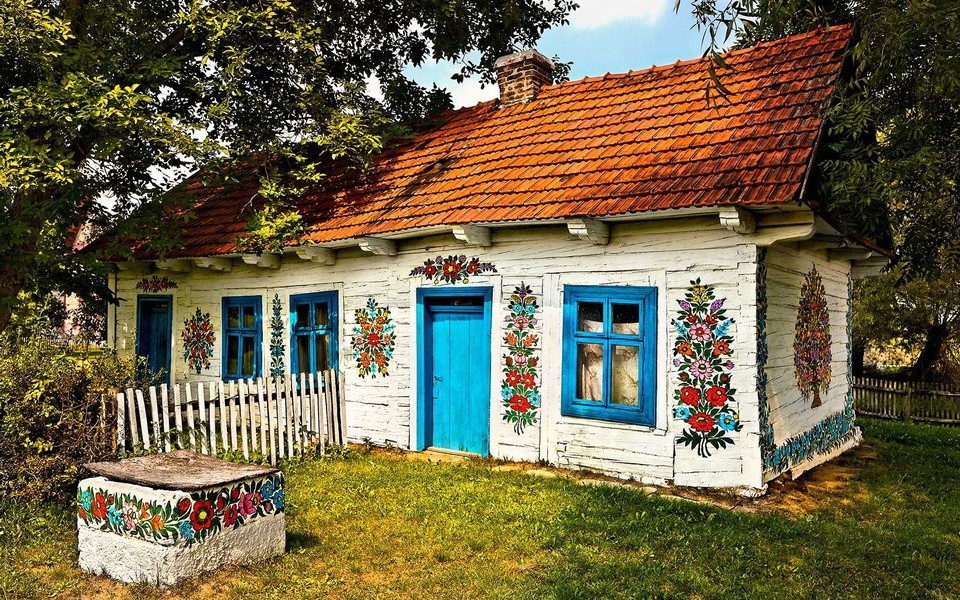 |
| Photo: Travelandleisure |
Known lovingly as “The Painted Village,” nearly every bare surface in the village, be it stone or wood has been decorated with intricate floral patterns in a tradition that dates back almost a hundred years. While there is little concrete evidence to support the story, the belief is that the habit of painting flowers on the walls began in the days when soot and smoke issued from everyone’s tiny wood-burning stoves. As the black marks from the soot appeared on the interior and exterior walls of the homes in Zalipie, the women would simply cover them with painted flowers. In the beginning they would even make their own brushes out of cow hair and make paint out of cooking fat and dye.
In time, this joyfully and unique habit was passed on from one generation to another. Moreover, women found inspiration in nature and local folklore, so their paintings became both larger and more colorful.
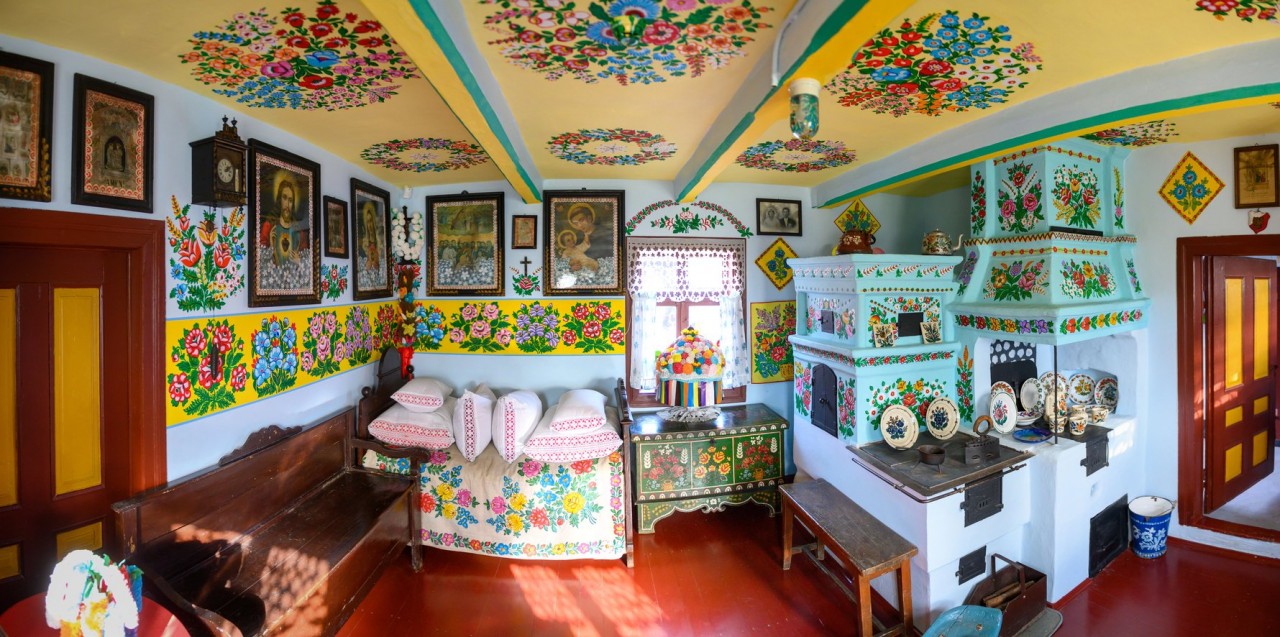 |
| Inside the Felicja Curyłowa Farmstead Museum, Zalipie. Photo: Inyourpocket |
One woman in particular became really obsessed with this tradition. Her name was Felicja Curylowa (1904 – 1974) and she decorated every surface of her three-bedroomed cottage, no matter how small or large. After her death, the beautiful house was turned into a museum. And it is quite a source of attraction among tourists!
Despite being the perfect Instagram field day and well-known throughout Poland, Zalipie is well enough off the tourist trail that it is still not a highly-trafficked destination and your presence there will likely be met with smiles, welcoming gestures and plenty of inquisitiveness from the villagers themselves. The residents are generally open to having guests and will sometimes invite visitors into their homes to see their artwork (and perhaps sell you some). If you're so lucky you'll find not only the interior walls, but the ceilings and ceiling beams are also adorned with painted wreaths and garlands, flowers brighten the stoves, fireplaces, doorframes, tablecloths, pots and pans, vases and most everyday household items with any sort of surface area. Other acts of handicraft you’ll notice are straw spiders hanging from the ceiling and colourful paper bouquets, often beneath or beside religious icons. Few adventures could be more authentic, so if you’ve got a vehicle and some time to plumb around Poland, put this sleepy little marvel on your list.
 |
| Photo: Unusual Place |
What to See in Zalipie
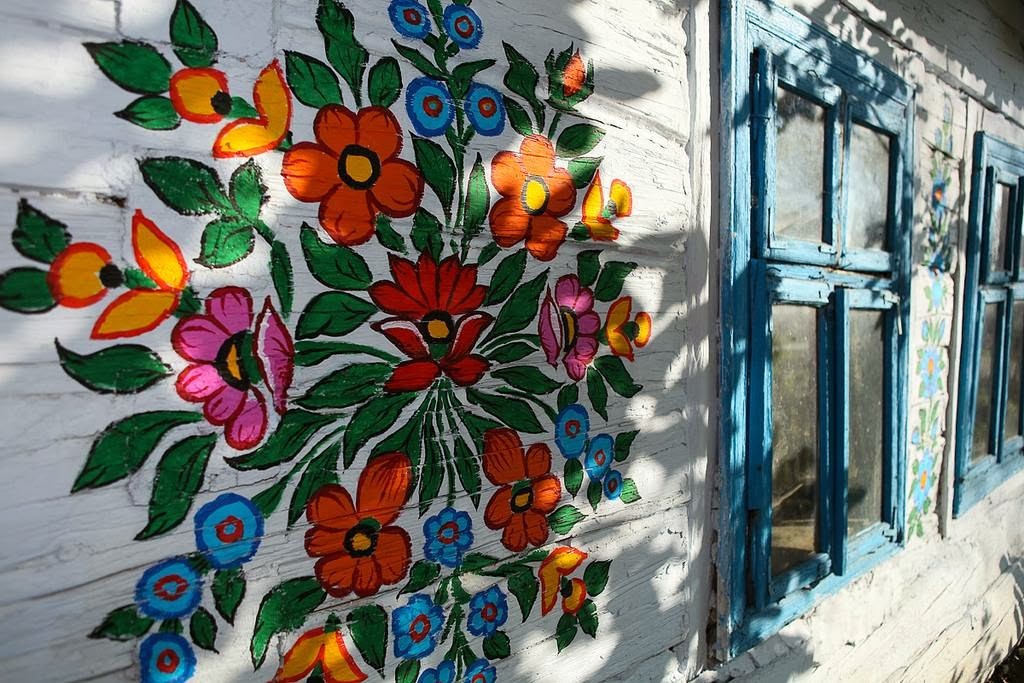 |
| Image Credit: Flickr User Poland MFA |
As Zalipie is a village, there’s no centre or high street to gravitate to (or restaurants, or even convenience stores, for that matter - pack a lunch); most of the sights can be accessed by foot, but you'll wish you at least had a bicycle (if not a car). The two most essential and accessible places to visit in Zalipie are the Painter's House - the closest thing to a tourist info centre you'll find in the area (though that doesn't mean you'll gather much intel inside or even find it open), and the Felicja Curyłowa Farmstead Museum - an official branch of the Tarnów Regional Museum (make sure you don't miss this one). Once you've crossed those off the list, seek out St. Joseph's - the village church at Zalipie 160 - whose interior is filled with floral flights of fancy.
The real fun of a visit to Zalipie, however, is in combing the countryside and discovering the cheerful decorations between these main sights. There are upwards of 20 painted houses in Zalipie, with a dozen or so others scattered about the neighbouring villages of Kuzie, Niwka, Kłyż and a few others. On Zalipie’s country roads you will see all manner of inanimate surfaces painted with similar symmetrical floral bouquets over white backgrounds, with window framing traditionally being a bright blue. Barns, fences, outhouses, wells, chicken coops, doghouses and even the village firetruck have all gotten this treatment; basically, if it doesn’t move, it’s been livened with colour. Also, keep your eyes peeled for several roadside shrines around the countryside.
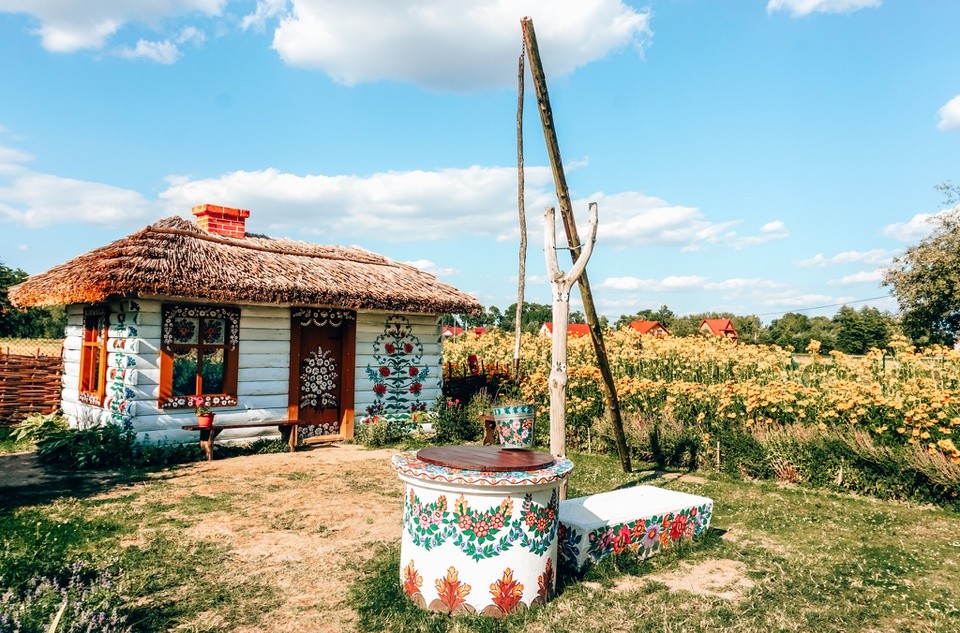 |
| Photo: Jo Explores |
If you can’t make it to Zalipie but still fancy a taste of what it’s like, we recommend you visit the Kraków Ethnographic Museum where you’ll see cottage interiors and other regional folk traditions similar to those found in Zalipie.
Getting to Zalipie
Located near the confluence of the Wisła and Dunajec rivers, but essentially in the middle of nowhere, Zalipie is not that easy to get to, but you have to appreciate that this is the very reason it is still such a special place to visit. Zalipie is most easily accessed by car; GPS or a good map is an essential wingman for the journey. There is no trian station in Zalipie. Make sure you've got a way to keep your smartphone charged, and in addition to your camera, pack some food as there are no restaurants or shops in the close vicinity.
FROM KRAKÓW
Just under 100km northwest of Kraków, the journey to Zalipie from Kraków takes about 1hr 40mins by car, and the fastest (though not the most scenic) route is actually via Tarnów. There are no direct buses or trains from Kraków to Zalipie.
FROM TARNÓW
36km north of Tarnów, Małopolska's second city is the best jumping off point for a trip to Zalipie, and the journey by car takes about 40mins. If you don't have your own vehicle, use the helpful journey-planning website e-podroznik.pl to find bus connections between Tarnów and Zalipie. A few daily mini-buses from Tarnów do stop in Zalipie; look for private shuttles headed for Gręboszów or Bieniaszowice that leave from opposite the Tarnów bus station. You'll pay 6zł to get off in Zalipie, but be mindful of the departure time for the last journey back. Alternatively, you could hitchhike to Zalipie from Tarnów, but don’t bank on spending the night there unless it’s in a field.
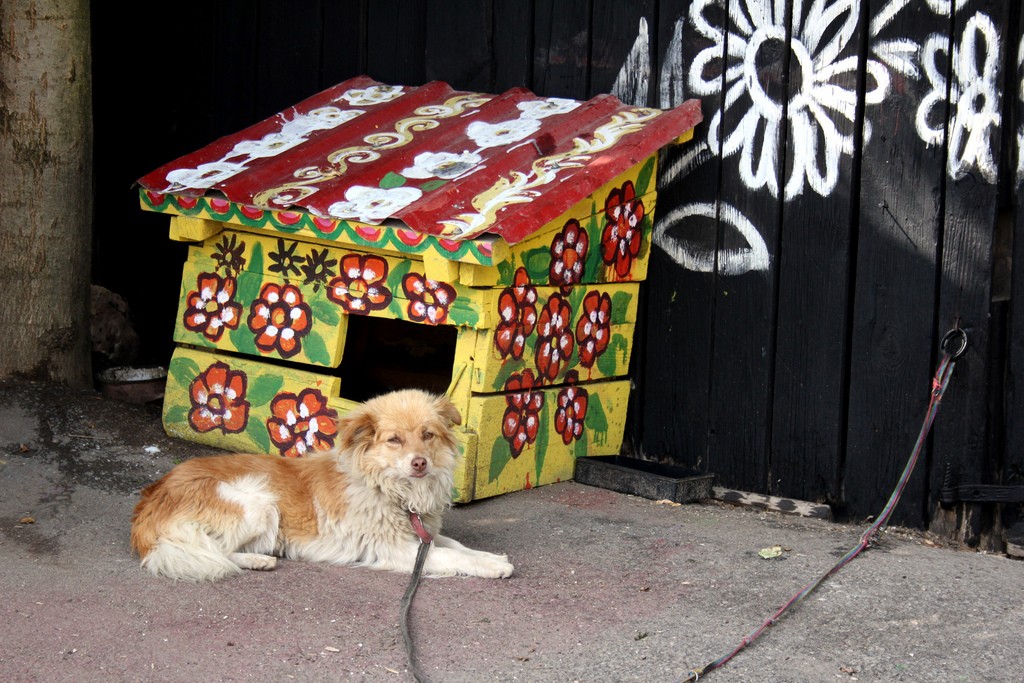 |
| Photo: Unusual Place |
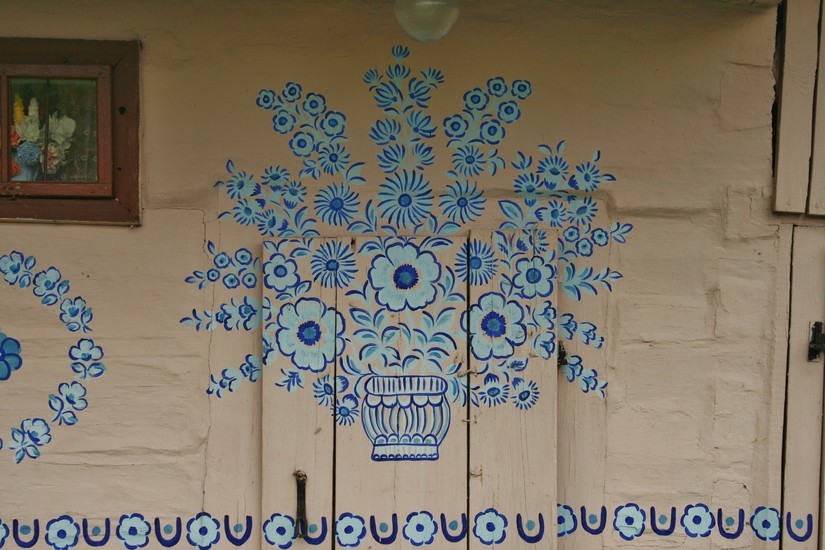 |
| Photo by Emily Meadows |
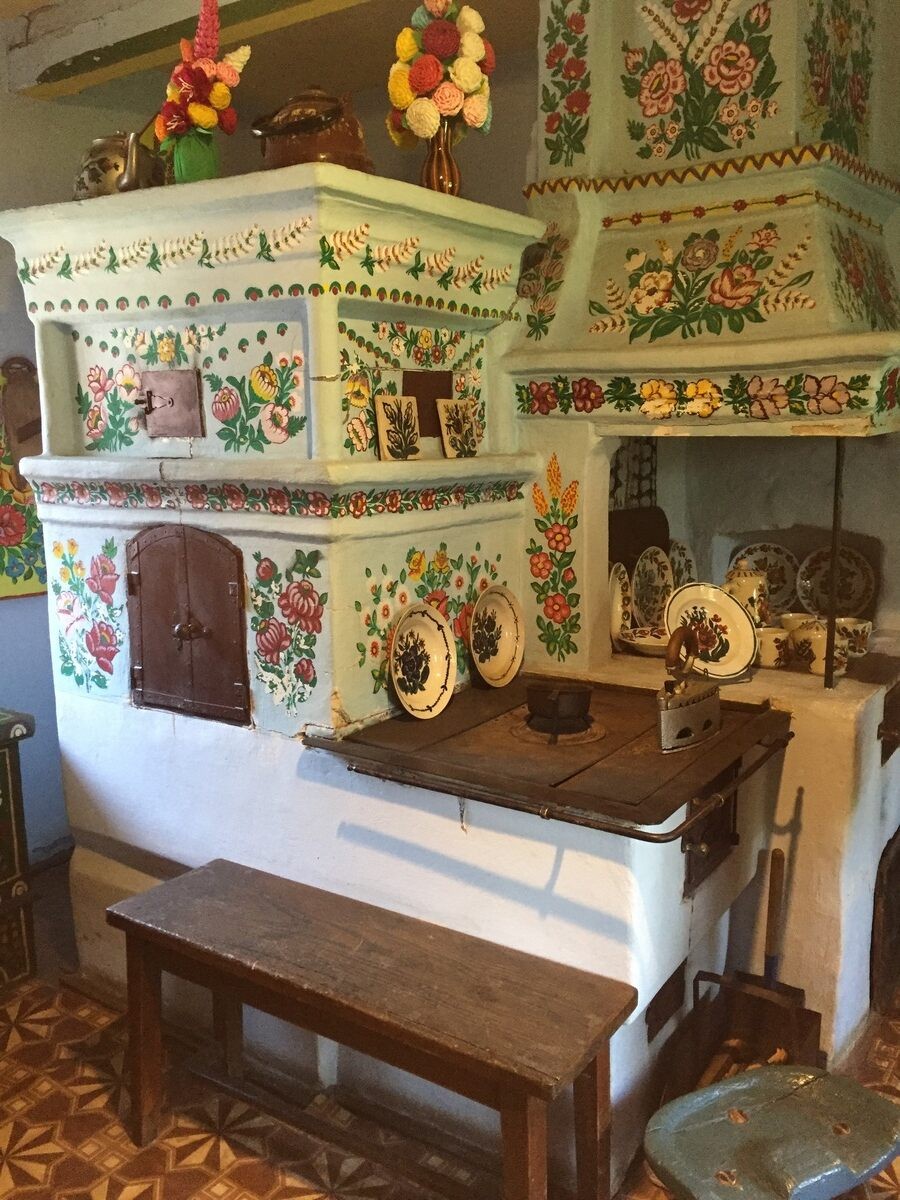 |
| RACHEL617 (ATLAS OBSCURA USER) |
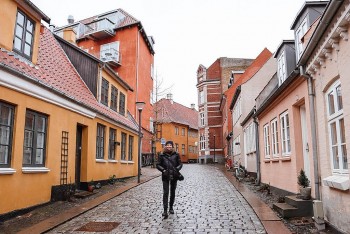 | First Covid-19 Free Country: Visit These Beautiful Destinations in Denmark As the first country that is Covid-19 free, Denmark is a beautiful destination with many gorgeous spots, delicious delicacies and interesting activities around the country. |
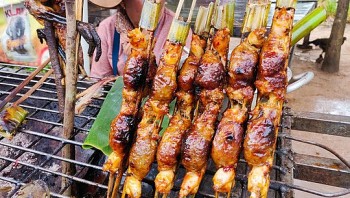 | What to Eat in Cambodia? Here're 14 Most Popular Dishes Cambodia’s cuisine takes in a range of mouth-watering dishes, with a variety of herbs and vegetables. |
 | The Mysterious Initiation Well at Quinta da Regaleira Somewhere in Portugal, there is a historical site named Quinta da Regaleira castle and its mysterious Initiation Wells that charms many tourists because of its ... |
Recommended
 World
World
"Great Leader": JD Vance Lauds PM Modi During His India Visit
 World
World
Trump’s Tariff Pause: A Strategic Move from “The Art of the Deal”?
 World
World
"Indian Navy's participation in AIKEYME exercise matter of great happiness": Admiral Dinesh Kumar Tripathi
 World
World
ASEAN and US Tariff Dilemma: Hybrid Approach to Global Trade Tensions
Popular article
 World
World
Vietnam Affirms Its Active and Responsible Role at UNESCO
 World
World
US Imposes 125% Tariff on China, Pauses Tariffs for 90 Days on Over 75 Countries
 World
World
"Massive financial deficits with China, EU can only be cured with tariffs": Donald Trump
 World
World







